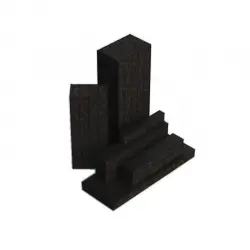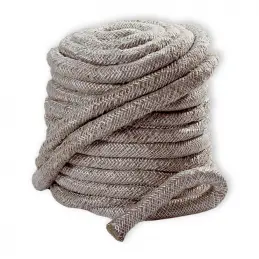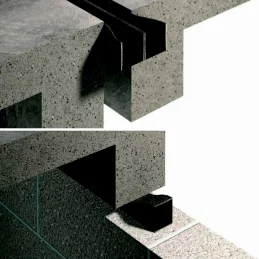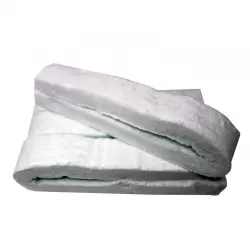- There are no more items in your cart
- Shipping Calculated at checkout
- Sub-Total (inc. VAT) £0.00
Need Help?
Intumescent Joint and Gap Seals
Buy intumescent joint and gap seals to provide fire protection where substrates meet together, either vertically or horizontally, for up to 4 hours. At Rawlins Paints we have fire protection seals for gaps and joints up to 100mm wide, with backing materials suitable for expansion joints.
If you require more help to find and specify fire protection for your project or contract, our technical team are always on hand to advise. Give us a call on 0113 2455450 (option 2) or send a message to [email protected].

Nullifire FJ400 Intuspan
A very pliable intumescent expansion joint with a high level of movement that is suitable for gaps up to 100 mm, providing up to 2 hours fire performance with no adhesive required in most situations.Ideal for high vibration areas, such as lift shaft interfaces Can accommodate regular cycles of high or low amplitude movement Tolerates...

Rockwool Softseal Lamella Single Coated Coated Linear Strips
Incorporates a product specifically designed to accommodate movement within buildings in linear joint seals.Both vertical and horizontal joint applications. Part of the Rockwool Firepro range. Acoustically absorbent. CE Marked. Easy to handle and install. Tested for durability to current EU guidelines. Supplied pre-coated. Provides...

Rockwool Linear and Trapezoidal Firestop System
Made from dense, moisture resistant stone wool, allowing adequate compression yet retaining the necessary lateral stiffness for ease of installation. The Linear and Trapezoidal Firestop System can be manufactured to suit a wide range of steel profile dimensions. All Firestop products are supplied in standard lengths of 1m.Developed to...

Nullifire FJ203 Fire Resistant Backer Rod
Firestopping backer rod made from rock wool, sheathed with flexible glass wires. It is used to make fire-resistant expansion joints between masonry elements, wall and slab, directly exposed to fire or not, in hospitals, hotels, car parks, schools, airports, nuclear power plants etc.Can be used alone or in combination with Nullifire FS703...

Rockwool Softseal Lamella Double Coated Linear Strips
Incorporates a product specifically designed to accommodate movement within buildings in penetration seals.Acoustically absorbent. CE Marked. Easy to handle and install. Tested for durability to current EU guidelines. Supplied pre-coated. Part of the Rockwool Firepro range.Also available: Firepro Softseal Lamella Single Coated...

Quelfire QI Intufoam Linear Gap Seal
Versatile fire resistant linear gap seal intended to provide a fire stop seal for linear joints or at the junction of compartment floors and walls. The compressible foam core accommodates different joint widths and a number of products are available providing different fire ratings, in different gaps and orientations. Intufoam’s excellent...

Sika Backer Rod Fire Resistant Joint Sealing Material
A workable, mineral wool-based backing material wrapped with a glass-fibre yarn designed for fire resistant joint sealing in horizontal and vertical building structures, with up to 4 hours fire resistance (EN 1366-4).Easy to apply - Very versatile, can be combined with 3 joint sealants Adapts to irregularities the of joints Used in...

Protecta Mineral Fibre Bio Backing Material
High-temperature insulation material, engineered for industrial applications. Suitable for use on furnaces, boilers, ovens, expansion joints, and as a fire protection backing material. Offers excellent thermal stability, tensile strength, and low thermal conductivity for energy-efficient insulation. Fully inert with no hazardous...

Nullifire FI064 Soft Joint Backer
64 kg rock mineral wool slab, to be cut on site and rotated through 90° to form a highly compressible backer with vertically orientated fibres. Specifically tested for a high movement backer, when used in conjunction with other Nullifire products. The system is suitable for both horizontal and vertical applications and can offer acoustic...

FSi Stopseal LJS Linear Joint Seal
Intumescent thermoplastic sealing system for fire resistance. Suitable for use on rigid walls, rigid floors, and linear construction joints. Certified to ISO 9001 and Emicode EC 1+ standards for quality and low emissions. Offers up to 240 minutes of fire resistance (E 240, EI 120) in rigid walls and floors. Restricted to professional...
Need Help?
Need Help?
Installation Techniques and Best Practices
Pre-Installation Considerations:
Before installing intumescent joint and gap seals, it's essential to assess the gap dimensions, substrate conditions, and any potential obstructions. The substrate should be clean, dry, and free of dust, oil, or other contaminants that could affect adhesion or expansion performance.
Sealant Application:
For linear joints, intumescent sealants are often applied using a caulking gun, filling the gap evenly and ensuring that the material is in full contact with the adjoining surfaces. The depth and width of the sealant application are typically specified by the manufacturer to ensure optimal performance. For larger gaps, backing materials such as mineral wool might be used in conjunction with intumescent sealants to provide structural support and ensure even expansion during a fire.
Firestop Collars and Wraps:
When dealing with penetrations by pipes or cables, intumescent firestop collars and wraps are commonly used. These devices are installed around the penetrating element, and upon exposure to fire, the intumescent material within them expands to crush and seal off the penetration. This is particularly important for plastic pipes, which would otherwise melt and create a pathway for fire and smoke.
Post-Installation Inspection:
After installation, it's critical to inspect the seals for any gaps, voids, or inconsistencies. A thorough inspection ensures that the seals will perform as expected under fire conditions. Documentation of the installation process is also important for future reference and compliance with building codes.
Interaction with Building Systems
Integration with HVAC Systems:
Intumescent seals are often used in conjunction with fire-resisting dampers and ductwork within HVAC systems. These seals ensure that, in the event of a fire, the dampers close properly and the ductwork is sealed off, preventing the spread of fire and smoke through ventilation systems. The seals must be compatible with the materials used in the HVAC system to ensure a reliable firestop solution.
Coordination with Fire Detection and Suppression Systems:
In some advanced fire protection strategies, intumescent seals are integrated with active fire protection systems. For example, fire detection systems might be configured to trigger the expansion of certain intumescent materials in high-risk areas, such as around critical infrastructure or high-occupancy spaces. This integration can provide an additional layer of protection beyond the passive capabilities of the seals alone.
Regulatory and Certification Standards
Building Code Requirements:
Intumescent joint and gap seals must meet specific fire resistance ratings as outlined in national building codes. In the UK, these requirements are often detailed in Approved Document B, which specifies the necessary fire performance for different building types and uses. The seals must be tested and certified to demonstrate compliance with these codes, ensuring they provide the required level of protection in real-world fire scenarios.
Third-Party Certification:
Achieving third-party certification, such as from the British Standards Institution (BSI) or similar bodies, involves a comprehensive review of the product's performance in a variety of fire conditions. This certification process includes not only fire resistance testing but also audits of the manufacturing process, quality control measures, and ongoing product performance evaluations. Third-party certification is often a prerequisite for the use of these products in certain building projects, particularly those involving high-risk environments such as hospitals, schools, and high-rise buildings.
Performance in Fire Safety Engineering
Fire Modelling and Simulation:
In the context of fire safety engineering, the performance of intumescent seals is often assessed using fire modelling software. These models simulate the behaviour of fire within a building, including how it interacts with fire barriers and intumescent seals. This allows engineers to predict the seals' effectiveness in various fire scenarios and make informed decisions about their placement and specification within the building design.
Adaptation to Different Fire Scenarios:
The performance of intumescent seals must be tailored to different fire scenarios, such as cellulosic versus hydrocarbon fires. Cellulosic fires, common in residential and commercial buildings, involve materials like wood and paper and typically follow a slower growth curve. In contrast, hydrocarbon fires, which might occur in industrial settings, involve flammable liquids and gases, leading to much faster temperature rise and more intense fire conditions. Intumescent seals designed for hydrocarbon fires need to react more quickly and withstand higher temperatures.
Material Properties and Composition
Intumescent Material Composition:
Intumescent materials used in joint and gap seals typically consist of substances that undergo a chemical reaction when exposed to high temperatures. These substances might include ammonium polyphosphate, pentaerythritol, and melamine, which together generate a char when heated. This char expands and insulates the gap, thereby preventing the passage of fire and smoke.
Expansion Ratios:
The expansion ratio of intumescent materials can vary significantly depending on the formulation and the application. Common expansion ratios range from 5:1 to 20:1, meaning the material can expand up to 20 times its original thickness. This expansion is crucial in filling gaps and maintaining the integrity of fire-rated assemblies.
Durability and Environmental Resistance:
Always check what the intumescent seal can withstand, by speaking to the manufacturer. Some are often formulated to withstand environmental factors such as humidity, temperature fluctuations, and even exposure to chemicals. This ensures that the seals remain effective over the building's lifetime. In some cases, the intumescent material is encapsulated in a protective coating to further enhance its durability and resistance to environmental degradation.
Challenges and Limitations
Limitations in Certain Applications:
Despite their versatility, intumescent seals have limitations in certain applications. For example, in environments with constant exposure to moisture, such as in marine settings or some basements, the seals might degrade over time unless specifically formulated for such conditions. Additionally, in very high-temperature environments, such as those found in some industrial processes, standard intumescent materials might not be suitable, requiring the use of specialised formulations.
Cost Considerations:
The cost of intumescent seals can be higher than that of non-intumescent alternatives, particularly for specialised applications. This can be a consideration in budget-conscious projects, although the long-term benefits of enhanced fire protection and compliance with building regulations often outweigh the initial costs. Project planners must weigh the upfront costs against the potential risks and liabilities associated with inadequate fire protection.
Real-World Applications
High-Rise Buildings:
In high-rise buildings, the use of intumescent joint and gap seals is crucial for maintaining compartmentalisation. These seals prevent the vertical spread of fire between floors, which is a significant risk in tall structures. Case studies have shown that in buildings where intumescent seals were correctly installed, fire and smoke spread were effectively contained, allowing for safe evacuation and limiting damage.
Public Buildings:
In hospitals, schools, and other public buildings, intumescent seals are part of a broader fire safety strategy that includes both passive and active fire protection measures. These buildings often have strict fire safety requirements due to the high occupancy and the presence of vulnerable individuals. The use of intumescent seals in these environments has been proven to enhance safety, as evidenced by their performance in fire drills and actual fire incidents.
FAQs
What are Intumescent Joint and Gap Seals?
Intumescent joint and gap seals are specialised passive fire protection products designed to fill gaps, joints, and openings in buildings, which could otherwise allow fire, smoke, and hot gases to spread between fire compartments. These seals are critical in maintaining the fire integrity of buildings, ensuring that compartments remain isolated during a fire event, thereby providing crucial time for evacuation and firefighting efforts. The intumescent material used in these seals typically remains dormant under normal conditions but expands dramatically when exposed to high temperatures during a fire, effectively sealing gaps and preventing the spread of fire and smoke.
Where are Intumescent Joint and Gap Seals Typically Used?
Intumescent joint and gap seals are used in various applications where the continuity of fire barriers is essential. These include:
- Expansion Joints: In buildings, expansion joints are necessary to accommodate movements due to thermal expansion and contraction, as well as structural movements. These joints can, however, become weak points for fire spread if not properly sealed. Intumescent seals are used in these joints to ensure they maintain their fire resistance while allowing for movement.
- Perimeter Seals Around Fire Doors and Windows: These seals are critical in maintaining the integrity of fire doors and windows, preventing the passage of fire and smoke through gaps around the door or window frame.
- Curtain Walling Systems: In multi-storey buildings, gaps between the edge of the floor slab and the curtain wall façade need to be sealed to prevent fire spread. Intumescent seals are commonly used here to provide both fire and smoke resistance while accommodating building movement.
- Service Penetrations: Where pipes, cables, or ducts penetrate through fire-rated walls or floors, intumescent seals are used to seal around these penetrations, maintaining the fire resistance of the wall or floor assembly.
What are the Performance Criteria for Intumescent Joint and Gap Seals?
The performance of intumescent joint and gap seals is assessed based on their ability to maintain the fire resistance of the building element in which they are installed. The key performance criteria include:
- Integrity (E): This measures the seal’s ability to prevent flames and hot gases from passing through the seal during a fire. It ensures that no openings form that could allow fire to spread.
- Insulation (I): This refers to the seal’s ability to limit the rise in temperature on the unexposed side of the seal, preventing ignition of adjacent materials and protecting the building structure.
- Fire Resistance Rating: Seals are tested and classified according to their fire resistance, which is usually expressed in minutes (e.g., EI30, EI60, EI120). This rating indicates the time for which the seal can maintain its integrity and insulation during a fire, ranging from 30 minutes to several hours, depending on the specific requirements of the building code.
Are Intumescent Joint and Gap Seals Tested?
Yes, intumescent joint and gap seals undergo rigorous fire testing to ensure they meet the necessary performance standards. These tests are conducted in accordance with recognised standards such as BS 476 (Parts 20-24) for fire resistance tests of building elements, or the equivalent European standards such as EN 1366-4 for linear joint seals. The testing process involves subjecting the seals to controlled fire conditions to simulate real-life scenarios. The seals are installed in a test assembly, which mimics the construction of the actual building element (e.g., a wall or floor). The assembly is then exposed to a standardised fire curve, which increases in temperature over time, simulating the development of a fire. The performance of the seal is monitored for integrity and insulation, and the time it takes for the seal to fail is recorded. The results of these tests determine the fire resistance rating of the seal, which is crucial for ensuring compliance with building regulations.
Can Intumescent Seals be Installed on All Types of Substrates?
Intumescent seals are designed to be versatile and can be installed on a variety of substrates, including concrete, masonry, gypsum board, and steel. However, the performance of the seal can vary depending on the substrate. For example, intumescent materials may bond differently to concrete compared to a plasterboard partition, which can affect their expansion and sealing efficiency during a fire. Therefore, it is essential to choose the right type of intumescent seal for the specific substrate and application. The installation process must follow the manufacturer’s guidelines precisely, ensuring that the substrate is properly prepared, and the sealant is applied to the correct depth and in the correct configuration. In some cases, the substrate may require priming or additional surface preparation to ensure optimal adhesion and performance of the intumescent seal.
What Factors Should be Considered During Installation?
The effectiveness of intumescent joint and gap seals largely depends on correct installation. Key factors to consider during installation include:
- Substrate Condition: The surface where the seal is to be applied must be clean, dry, and free from contaminants such as dust, grease, or oil, which could affect adhesion.
- Gap Size and Configuration: The width and depth of the gap or joint must be within the specified range for the chosen intumescent seal. Incorrect gap sizes can lead to inadequate sealing performance during a fire.
- Application Method: Depending on the type of seal, application may be done using a caulking gun, trowel, or other appropriate tools. The sealant must be applied evenly and to the correct depth to ensure full coverage and effectiveness.
- Environmental Conditions: Temperature and humidity levels during installation can affect the curing and performance of the seal. It is important to follow the manufacturer’s recommendations regarding suitable conditions for application.
- Curing Time: After application, the sealant requires time to cure and develop its full protective properties. This curing period varies depending on the product and environmental conditions and should be adhered to before subjecting the seal to any mechanical stress or exposure to fire conditions.
What are the Maintenance Requirements for Intumescent Joint and Gap Seals?
Regular maintenance and inspections are crucial to ensuring the ongoing effectiveness of intumescent seals. Over time, seals can become damaged or deteriorate due to environmental factors, accidental impact, or building movements. Inspections should be carried out periodically to check for signs of wear, cracks, or gaps in the seals. Any damaged seals should be repaired or replaced immediately to maintain the fire compartmentation of the building. It is also important to ensure that no modifications have been made to the building that could affect the performance of the seals, such as the installation of new services or changes in the building’s structure. Maintenance should be carried out by qualified personnel who are familiar with the specific type of intumescent seal used and the manufacturer’s recommendations.
What Certifications Should Intumescent Seals Have?
Intumescent seals should be tested and certified by recognised third-party certification bodies to ensure they meet the required fire performance standards. Third-party certification provides an independent verification that the product has been tested in accordance with the relevant standards and is manufactured to a consistent quality. In the UK, certification bodies such as the British Standards Institution (BSI), Warringtonfire, and UL are commonly used. Certification should cover not only the fire resistance performance but also other factors such as durability, environmental resistance, and compliance with building regulations. Many construction tenders now require third-party certification as a prerequisite, and this is also often endorsed by industry bodies and governmental authorities to ensure that only proven and reliable products are used in fire protection applications.
